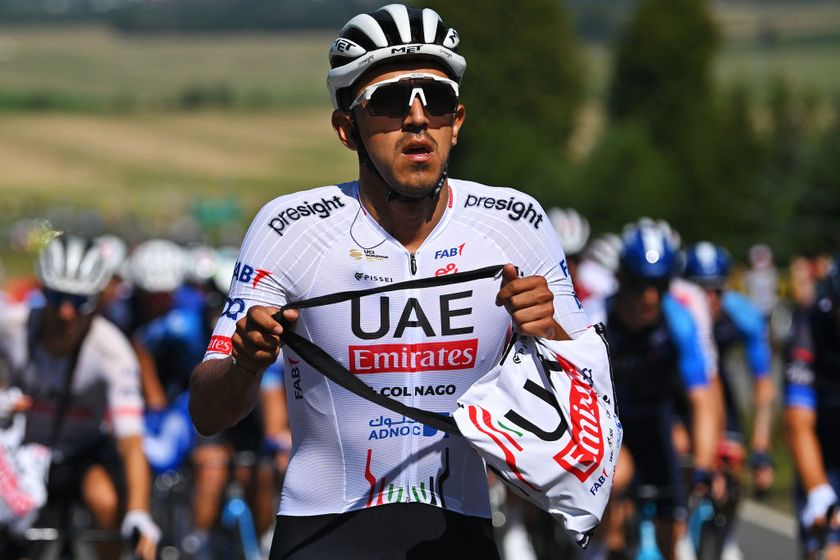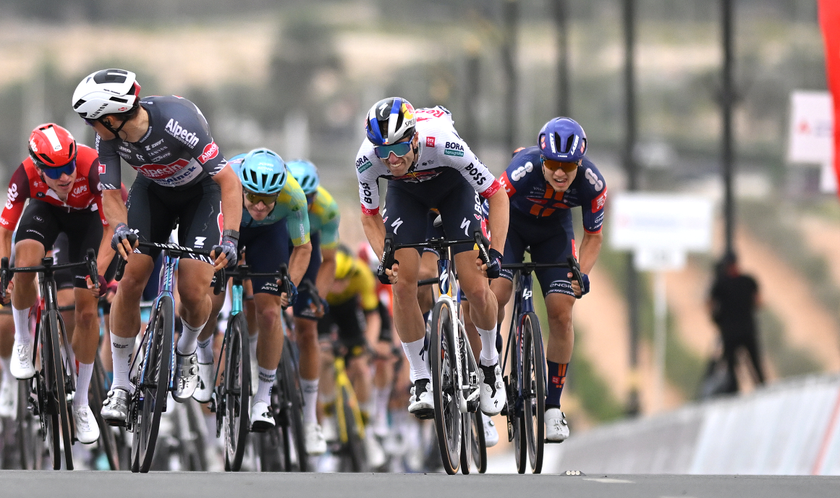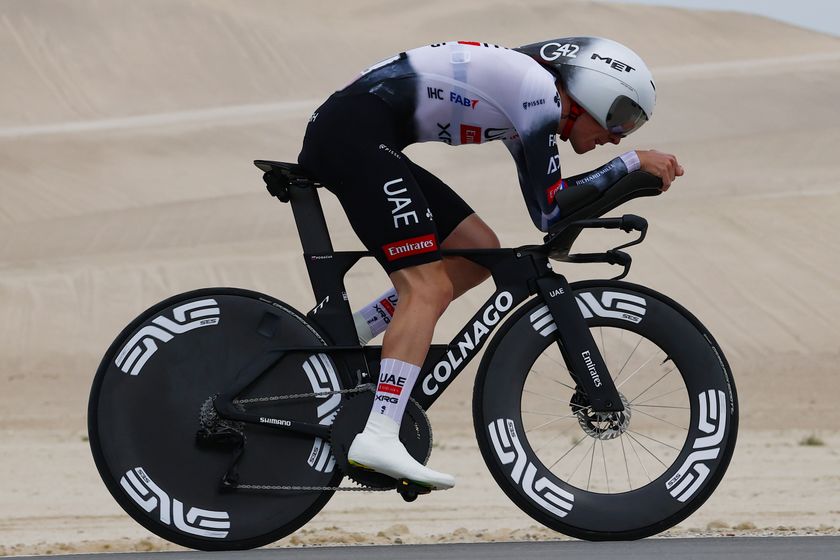Sagan 'without legs' in the finale of E3 Harelbeke
World champion beaten into second place by Kwiatkowski




Every advantage has its disadvantage. Fittingly for the day that was in it, the late Johan Cruyff’s oft-cited aphorism neatly encapsulated Peter Sagan’s predicament in the closing kilometres of E3 Harelbeke.
The world champion found himself with his predecessor Michal Kwiatkowski (Sky) for company at the head of the race on the run-in to Harelbeke, with a dwindling advantage over elite group that included Fabian Cancellara (Trek-Segafredo) and Tom Boonen (Etixx-QuickStep).
The quicker of the leading pair by reputation, Sagan was the natural favourite in the event of a two-up sprint with Kwiatkowski, but that status also brought with it the weighty responsibility of working on the front to ensure that they stayed clear of their pursuers.
After forging clear on the penultimate climb of the Karnemelkbeekstraat with 30 kilometres remaining, Sagan and Kwiatkowski established a maximum lead of 37 seconds, but that figure began to tumble as the parcours snaked through suburban housing estates on the fringe of Harelbeke in the last three kilometres.
“I was with Michal on the front. In the last two kilometres on the radio I heard ‘you have to pull, you have to pull’ because they were coming from the back,” Sagan said.
Sagan duly led into the long finishing straight, with its imperceptible rise, and – not for the first time this season – he was caught completely flatfooted when Kwiatkowski opened his sprint from distance, some 300 metres from the line. The Slovak climbed out of the saddle to give chase, but his pedal strokes were leaden, his effort forlorn. He soon sat down again, a beaten man, and rolled across the line in second place, four seconds down on Kwiatkowski.
“I think I did a lot of work and I was just without legs in the final,” Sagan admitted afterwards. “You know, the race is never like you expect. I did a lot of work on the front. I wanted to come together [with Kwiatkowski] in the finish and I worked more, I think, and I was just without energy. Anyway I am happy with how the race was. I didn’t crash, I was on the front.”
Get The Leadout Newsletter
The latest race content, interviews, features, reviews and expert buying guides, direct to your inbox!
Second place
Sagan has yet to land a victory in the rainbow jersey and has now finished in second place a maddening seven times since landing the world title in Richmond last September. On this occasion, he wore his disappointment with as much levity as he could muster in the circumstances.
As Kwiatkowski received the winner’s bouquet from the hostesses on the podium, Sagan hammed it up for the spectators by theatrically turning his back to the scene, and folding his arms in a pantomime show of disappointment, before breaking into a broad smile.
After the ceremonies, Sagan was ushered to Sporza’s makeshift studio at the finish line, where he sat alongside Eddy Planckaert to dissect his latest defeat, and there, too, he bore his frustration with good grace, preferring to focus on the positives that he could draw from the afternoon.
Whereas last year Sagan appeared laboured throughout his Spring campaign, this time around he is showing sustained signs of his vim of old, not least when he accelerated from the front group over the top of the Oude Kwaremont, by his own admission perhaps his least favourite climb in the Flemish Ardennes.
“I attacked there to try to break up the group because we did the Kwaremont, then a little descent afterwards,” Sagan said. “But on the Kwaremont, I felt good. I tried to attack, because I really felt good. Maybe I came to the front too late, though, and everybody stayed on my wheel.”
Mindful to make life difficult for Cancellara, who had just completed a 38-kilometre chase back after a mechanical problem, Sagan proceeded to attack the next climb, the Karnemelkbeekstraat, with gusto. He found an ally of circumstance in Kwiatkowski, and the winning move was born.
“When Cancellara came back, I tried to attack directly to see what would happen, and then it was just me and Kwiatek on the front,” Sagan said. “It depends, maybe if Cancellara didn’t have the technical problems, it would have been a different race, because he used a lot of energy to come back.
“I didn’t expect him to come back because on the front they were pulling full gas and behind us, Trek was also pulling full gas. It seemed he wouldn’t get back anymore, but after the Kwaremont he did. He used a lot of energy to get back.”
For all his generosity of effort in the final hour of racing, however, those last 300 metres were further confirmation that Sagan’s own resources of energy are more finite than he sometimes realises. Like at E3 Harelbeke and the Tour of Flanders a year ago, he simply ran out of steam as the finish drew near.
“I am preparing all the year for the Tour of Flanders,” Sagan said, but a week out from the big day, some old questions still linger.

Barry Ryan was Head of Features at Cyclingnews. He has covered professional cycling since 2010, reporting from the Tour de France, Giro d’Italia and events from Argentina to Japan. His writing has appeared in The Independent, Procycling and Cycling Plus. He is the author of The Ascent: Sean Kelly, Stephen Roche and the Rise of Irish Cycling’s Golden Generation, published by Gill Books.
Most Popular






